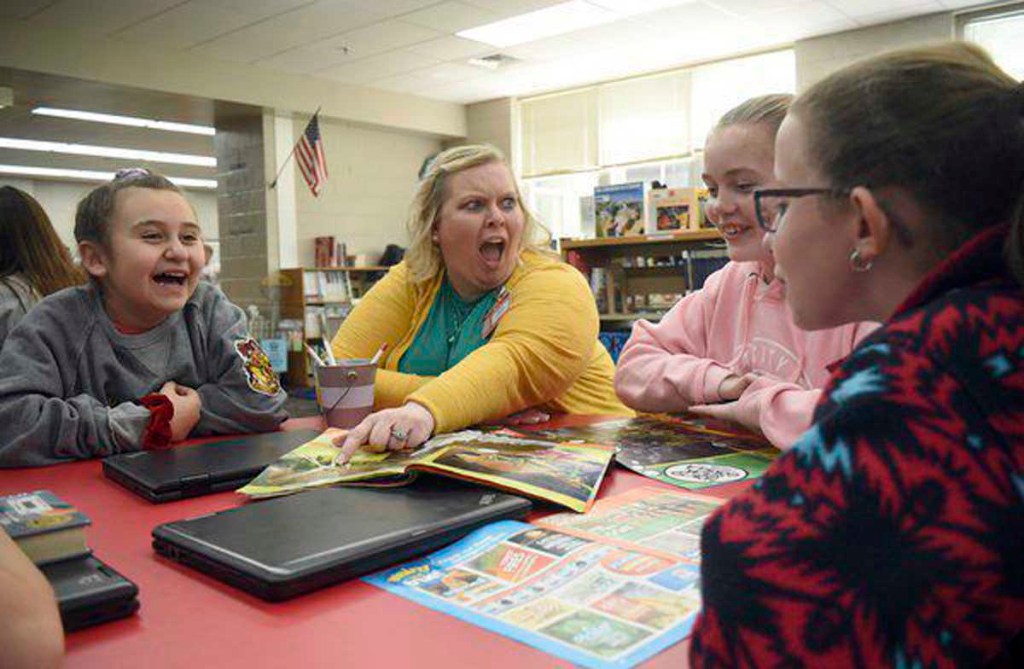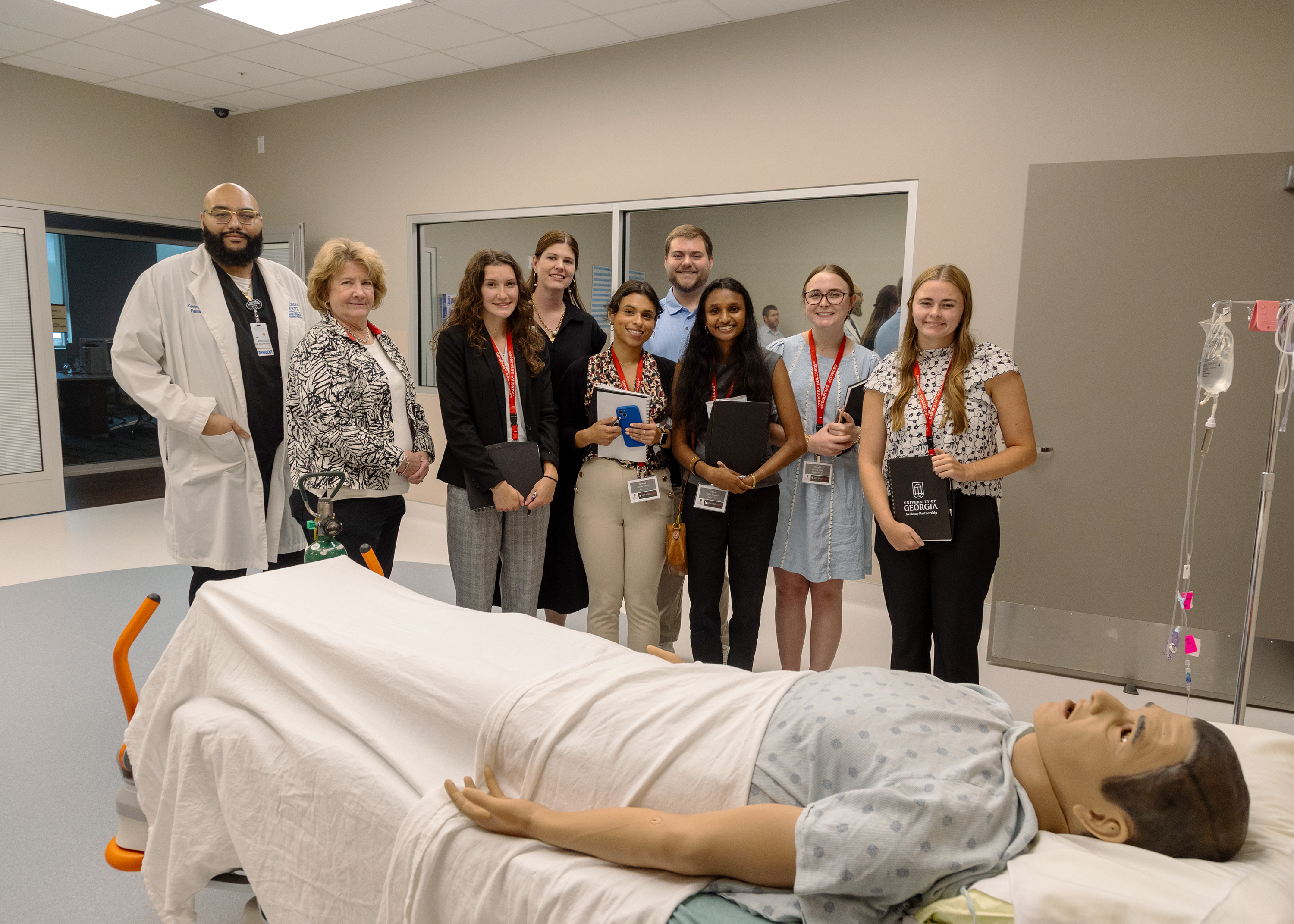Brookwood again named Distinguished School
Published 8:00 am Tuesday, January 7, 2020

- Matt Hamilton/Daily Citizen-NewsBrookwood School Principal Meleia Bridenstine reads with a group of students in the school's media center in this file photo.
DALTON, Ga. — For the second straight year, Brookwood School has achieved Distinguished School status from the Georgia Department of Education.
This commendation means Brookwood is ranked among the highest-performing 5% of Title I Schoolwide schools and Title I Targeted Assistance schools based on the most recent College and Career Ready Performance Index (CCRPI) single score, according to Dalton Public Schools. Brookwood’s overall 2019 CCRPI score was 86.5, while the state average for elementary schools was 77.1
The CCRPI scores schools on several components — content mastery, progress, closing gaps, readiness and, for high schools, graduation rate. The CCRPI is Georgia’s accountability tool for annually measuring how well its schools, school systems and the state are helping students achieve their goals.
Meleia Bridenstine, Brookwood’s principal, stated in a press release that she’s “so very proud of our students and teachers.”
“We have worked hard to achieve our goals, (and) our teachers and students work very well together,” Bridenstine added. “We have high expectations of our students, and of ourselves.”
In addition to the kudos, being named a Distinguished School also can provide practical benefits, according to the school system. For example, Distinguished Schools are eligible to apply for the National ESEA (Elementary and Secondary Education Act) Distinguished Schools Program award sponsored by the National Association of ESEA State Program Administrators.
The state Department of Education also released a list of Comprehensive Support and Improvement schools, and Morris Innovative High School landed on that list.
CSI schools fall into one or both of two categories, according to the state Department of Education. They are Title I schools that, when ranked according to their three-year CCRPI average, are among the lowest performing 5% of Title I schools in the state, or high schools with a four-year adjusted cohort graduation rate less than or equal to 67%.
Morris Innovative’s four-year adjusted cohort graduation rate for 2019 was 46.5%, according to the state Department of Education. The school’s five-year adjusted cohort graduation rate was also 46.5%.
The school has made strides in several CCRPI areas during the past few years, however.
For example, in the CCRPI’s “closing the gap” measure, the school received the highest possible score, 100, this year, said Wiley Dailey, deputy superintendent of school improvement and data analysis for Dalton Public Schools. “That’s really impressive.”
The culture of the school has also improved in recent years, said Pat Hunt, principal. “Once the community looked at what we really do here, there’s been a shift in how they view us, and we have more than 30 local businesses partnering with us.”
Students “have seen that, too, the accolades, acceptance and excitement,” she added. “That’s been a blessing.”
Considering Morris is where Dalton High School students go when they’ve fallen behind on credits, as well as the fact the student body is comprised predominantly of individuals for whom English is a second language and/or who work significant hours outside of school, it would be more surprising if the school wasn’t on this list, said Lisa Landrum, a school effectiveness specialist for the state Department of Education. Morris “is not a failing school.”
The Dalton Board of Education mandated Morris as a credit recovery spot a few years ago, and “we feel proud we’ve accomplished that mission,” said Pam Massingale, assistant principal. More than 600 students have graduated from Morris during the past decade.
That high school degree “has been a life-changer for a lot of them,” said Pat Holloway, Dalton Public Schools’ chief of staff. “It’s a real positive for our community.”
Morris also houses the Newcomer Academy for students learning English, and it has roughly 100 members in grades six and up this year, Hunt said. Students can remain in the Newcomer Academy for up to 18 months as they transition into more conventional classroom settings at Morris, Dalton High School or Dalton Middle School.
The typical Morris student faces a litany of challenges, from language and cultural barriers to chaotic family situations and to substantial workloads, and those can all be practical impediments to academic success.
For example, a student may not be able to stay after school for tutoring, because he or she may have no other mode of transportation outside of the school bus, Hunt said. Other students must go right to their jobs immediately after classes.
“We always ask them” whether they are working for themselves or to support their families, and more often than not, it’s the latter, Massingale said. “If they have to choose between school and work, they’ll choose work, because they have to provide for others.”
Because Morris has a relatively small student population, however, individuals can receive more individual attention, and the school can accommodate pupils based on life circumstances, she said. For example, if a student is falling asleep in class because he or she had to work all night, it’s counterproductive to punish them with detentions, but, instead, the school can work with them on a more suitable learning plan.
In recent years, Morris has made a conscious effort to hire staff “who have a heart for these kids,” Hunt said. “They are willing to do whatever it takes.”
The state Department of Education’s Office of School Improvement works directly with CSI schools and provides assistance to help them improve.
“We’re glad to have the extra support,” Hunt said. State funding has allowed Morris to have more professional development for teachers, after-school tutoring, academic coaches and “hands-on learning” in classes like science.
Morris worked with the state Department of Education to perform “a basic-needs assessment,” then constructed a “school improvement plan” based on that, Massingale said. Administrators meet regularly with Department of Education officials, and “they provide support for us.”
“This isn’t just about ritual compliance,” she added. “This is about best practices for students.”
Landrum “comes in (with) a coach kind of role and with resources the state provides,” Landrum said. “My job is to help them improve.”
Among the recommendations for Morris was to establish learning targets for students and define criteria for success so goals are readily apparent for pupils, and both Morris and the school system as a whole “have embraced that,” Landrum said. The school system goes “that extra mile.”
When students experience success, they take that confidence with them beyond the walls of school, which is important, Holloway said. “We want them to do better — and be better — in life.”
Morris will no longer exist in roughly 18 months, when the school system opens a new magnet school for grades 10-12 to complement Dalton High School, but it’s made a profound impact on numerous students, Holloway said. “It’s evolved, and now we need a new iteration” for the city’s second high school.
Morris and the school system also do commendable work with data, as teachers are provided with statistics not only on entire classes, but individual students, Landrum said. “That drives instruction.”
Everything at Morris “is student focused,” Massingale said. “We’re proud of our school.”





